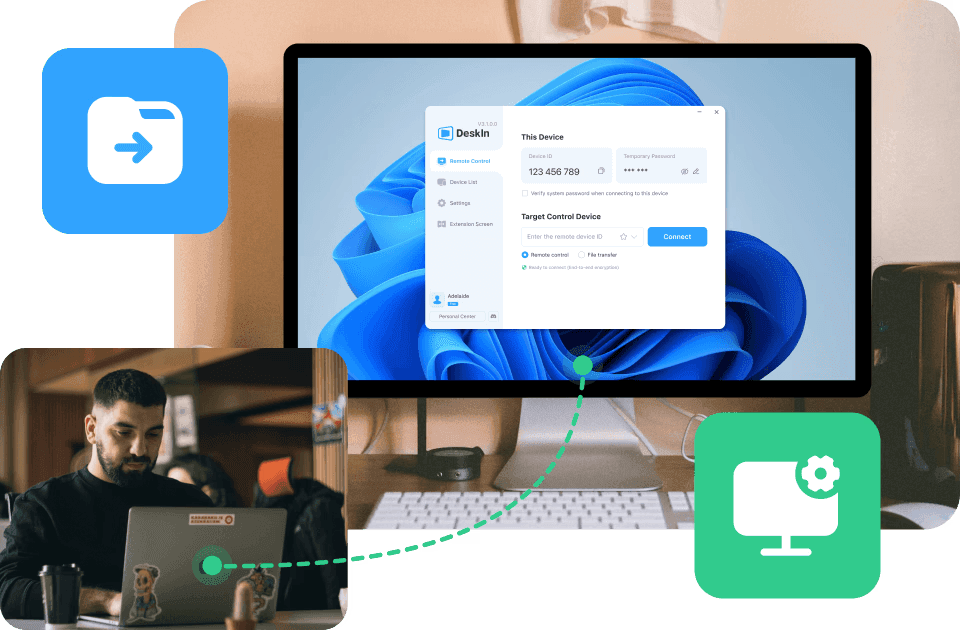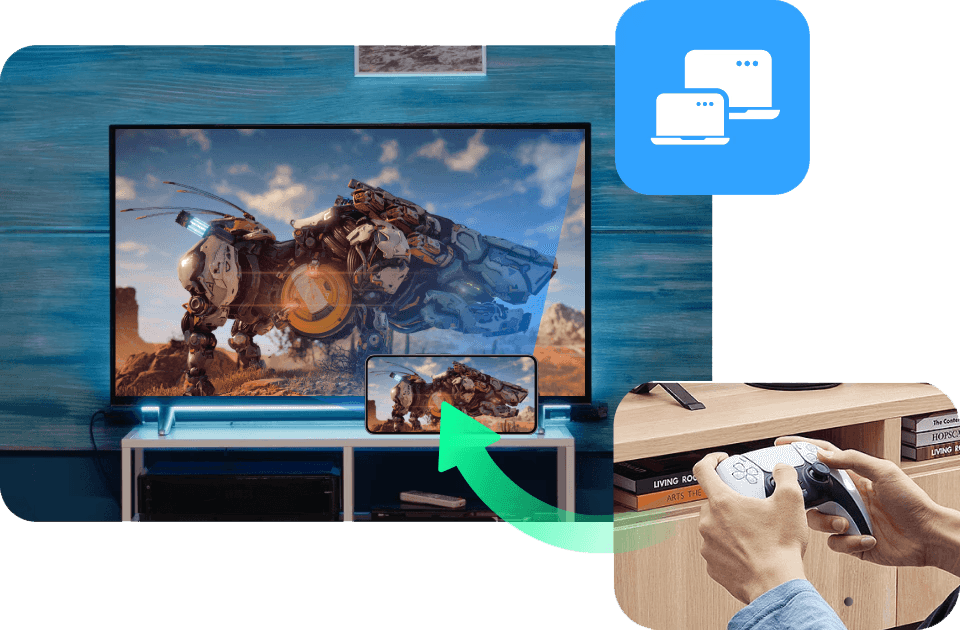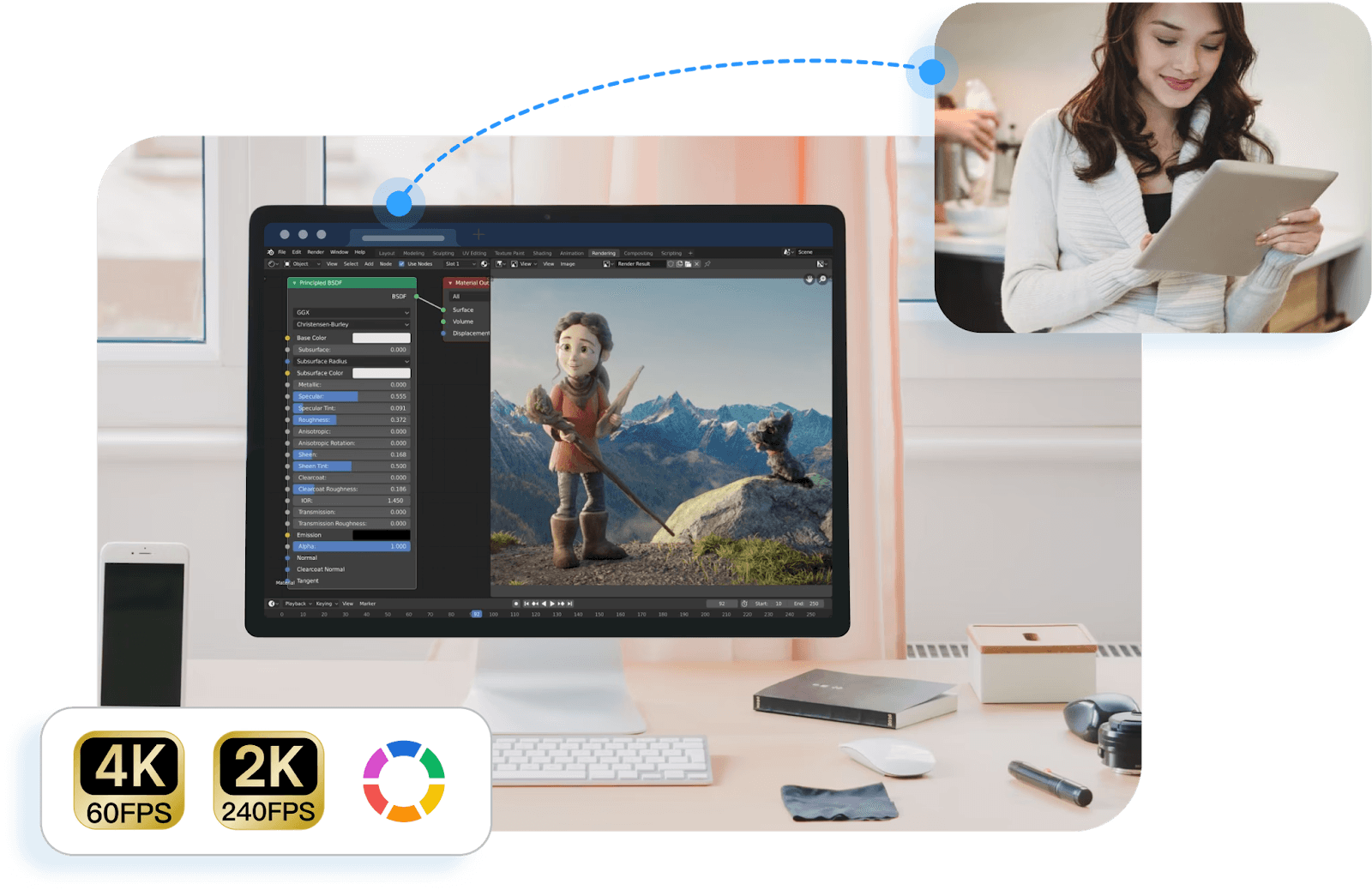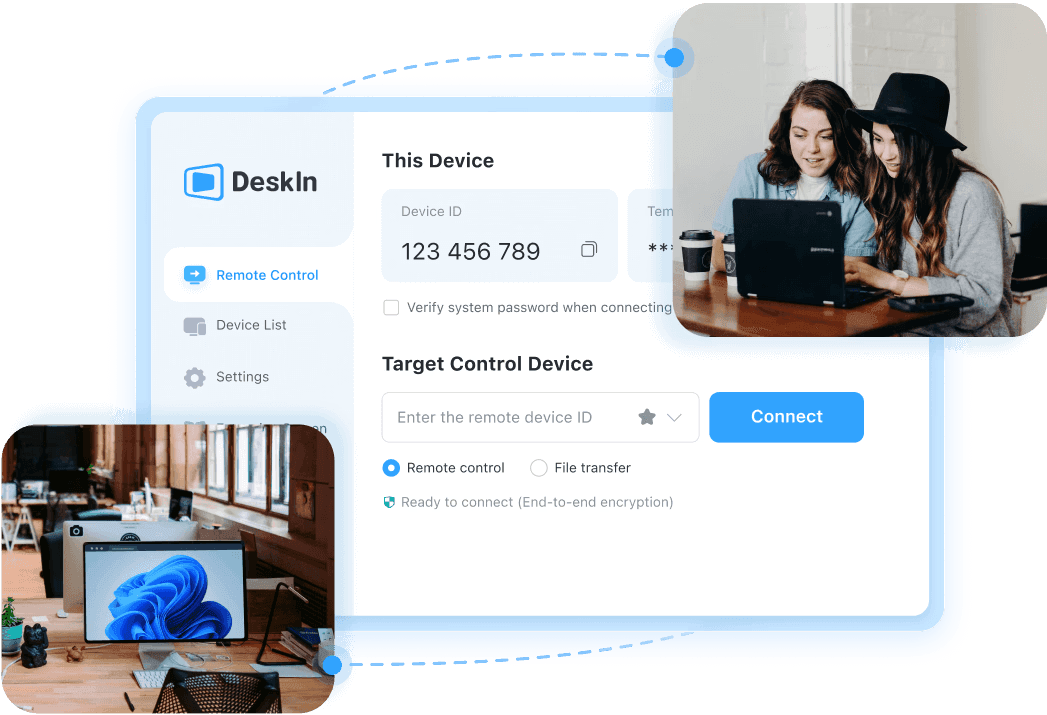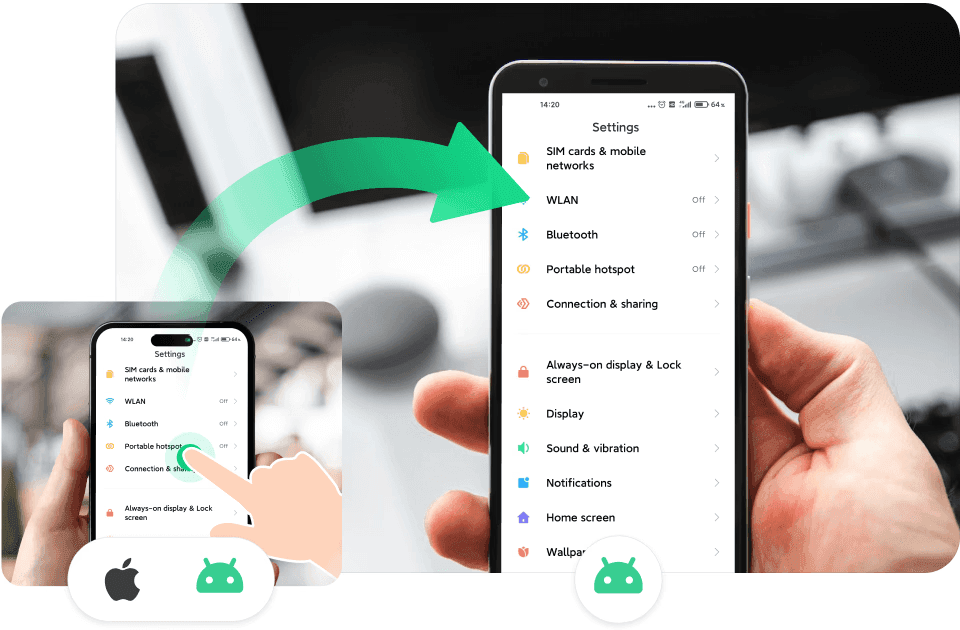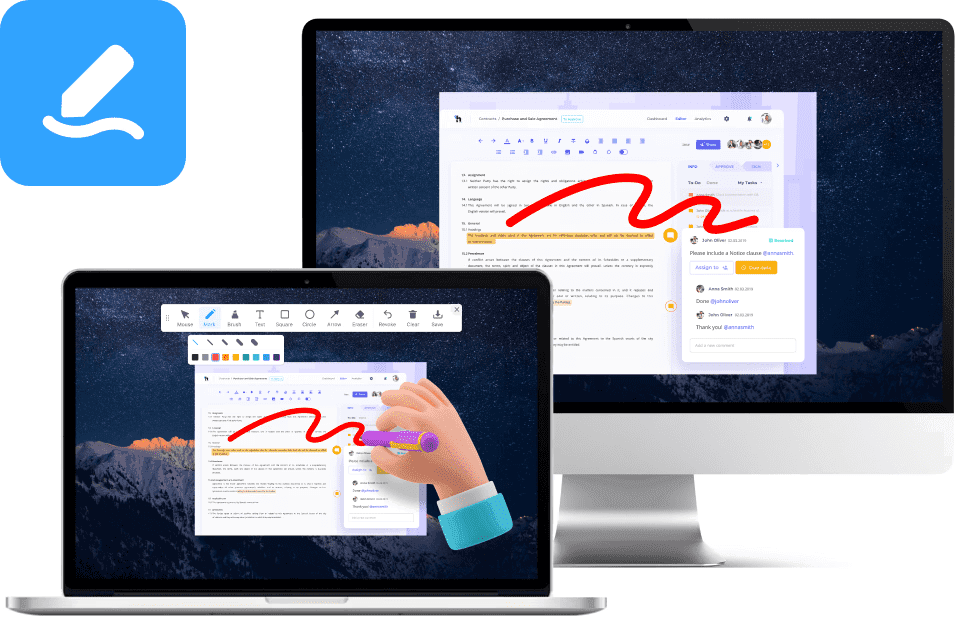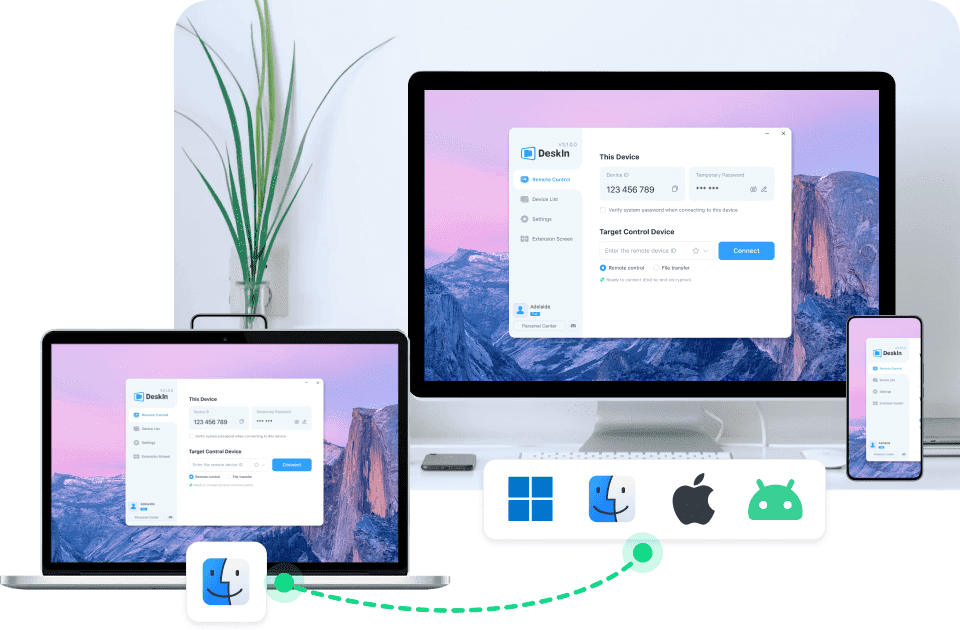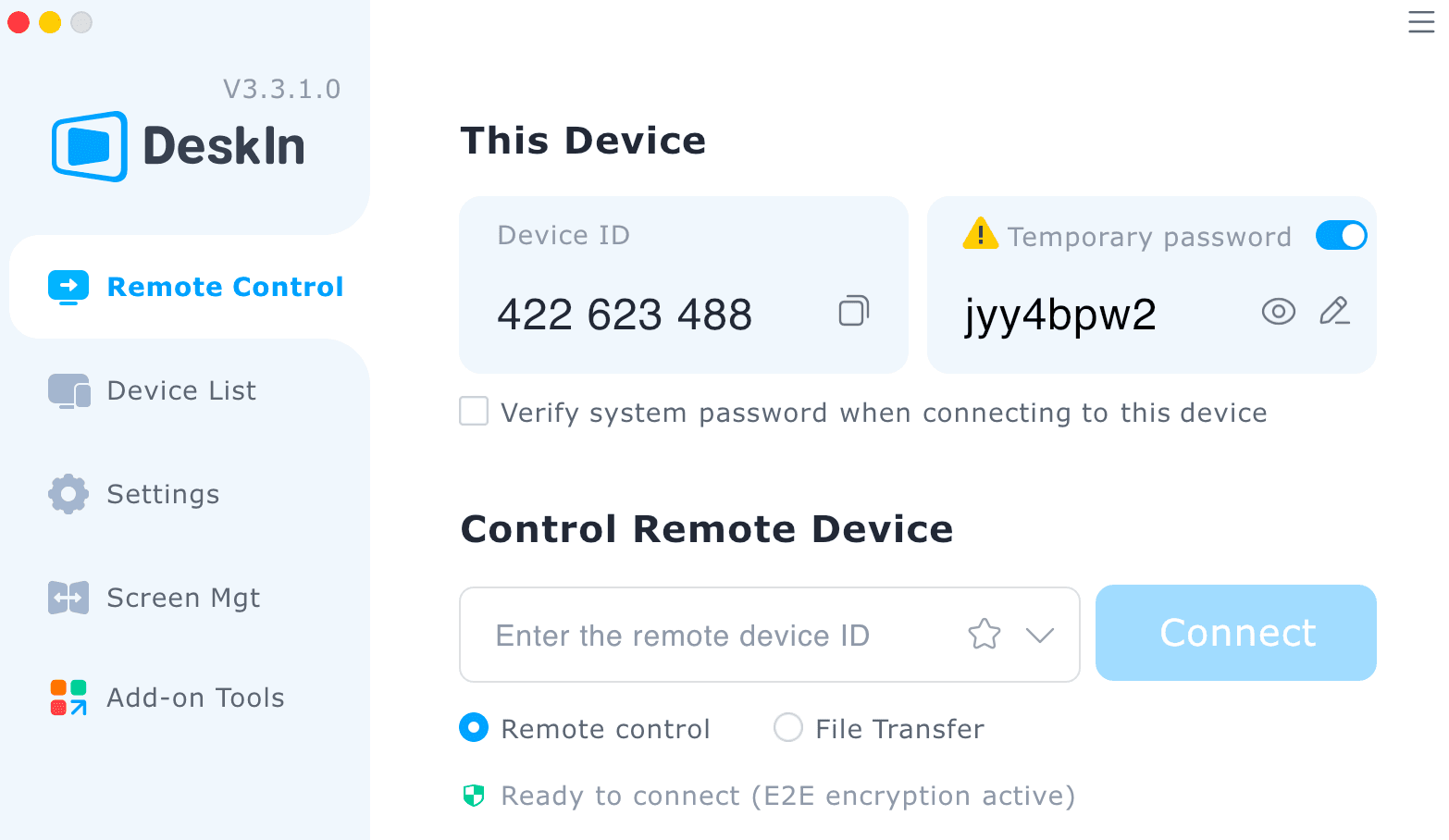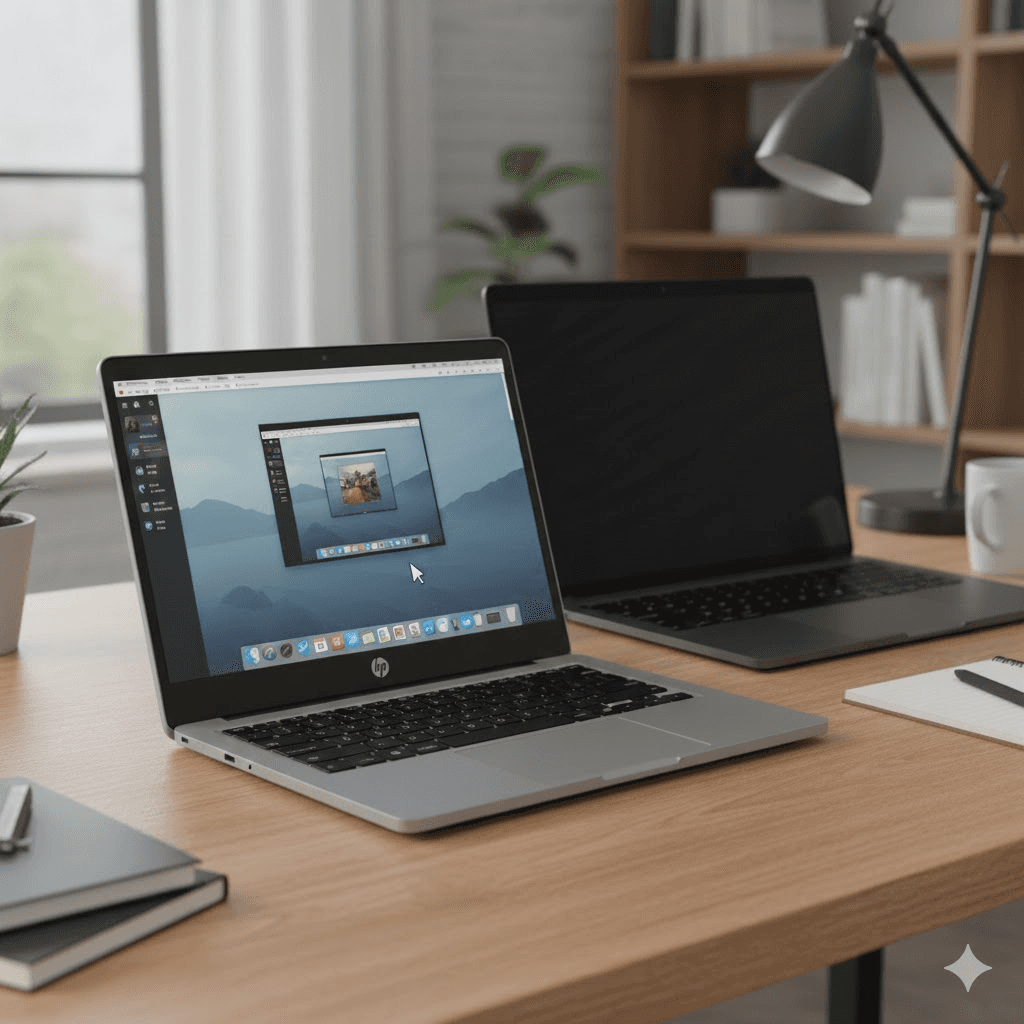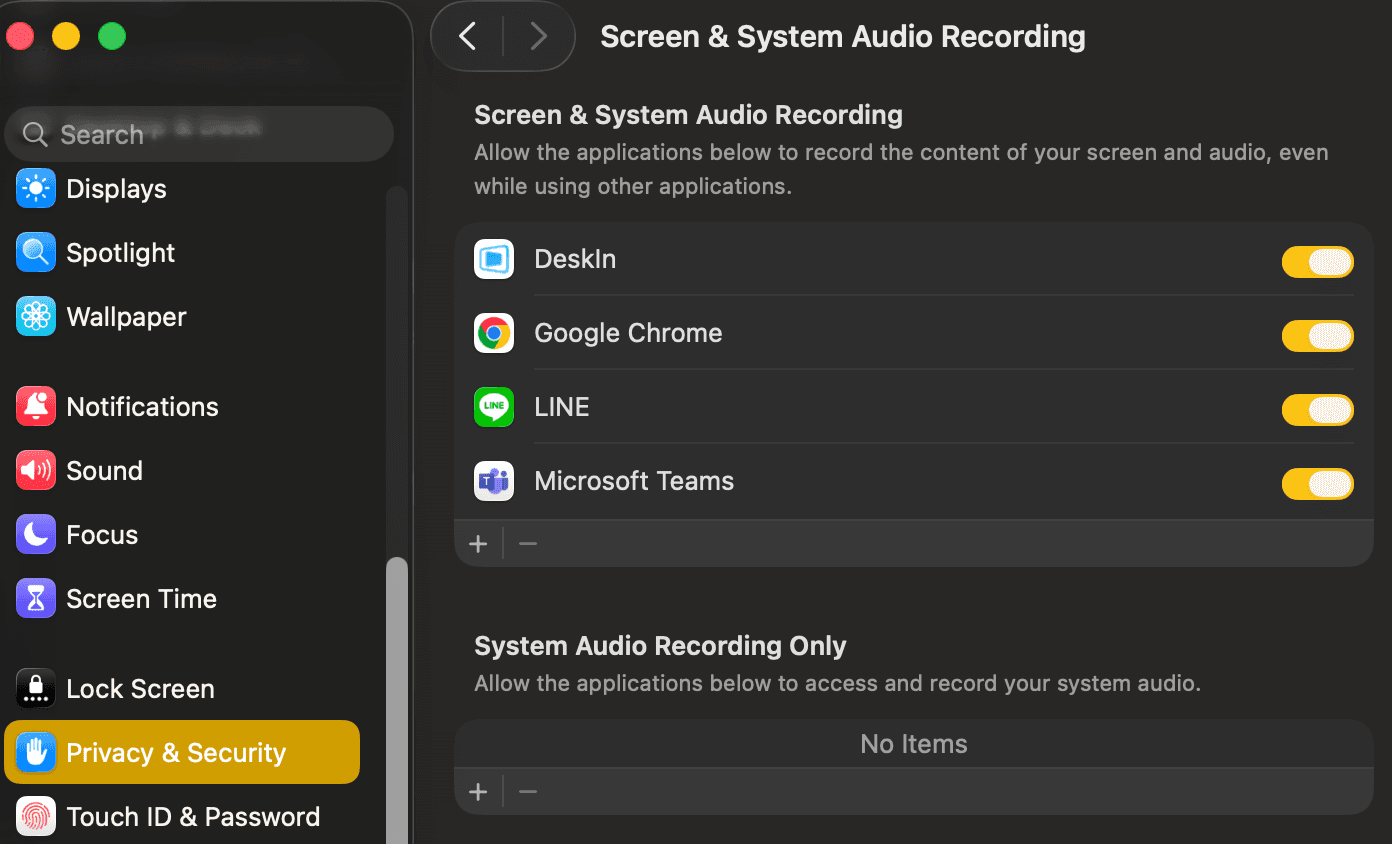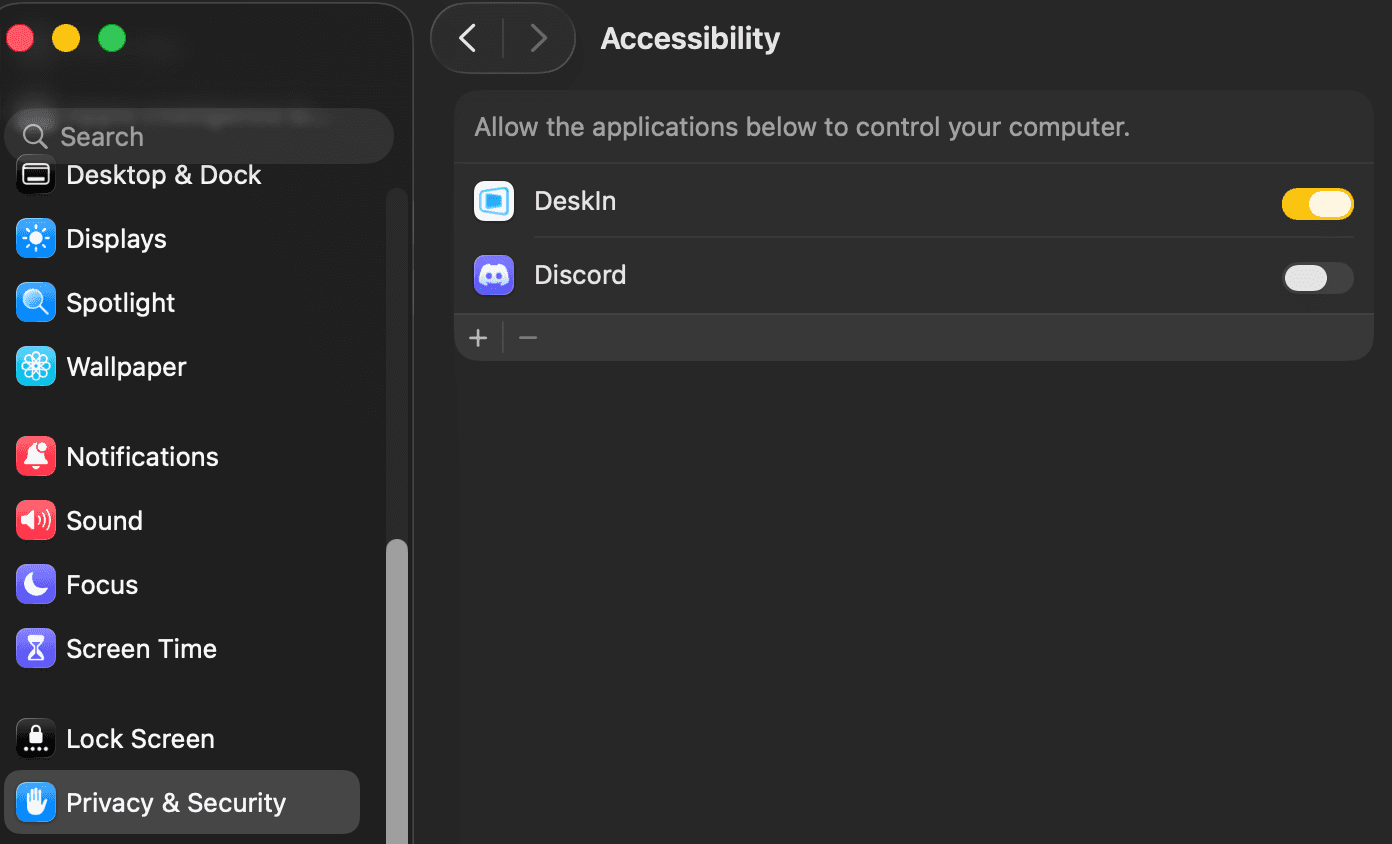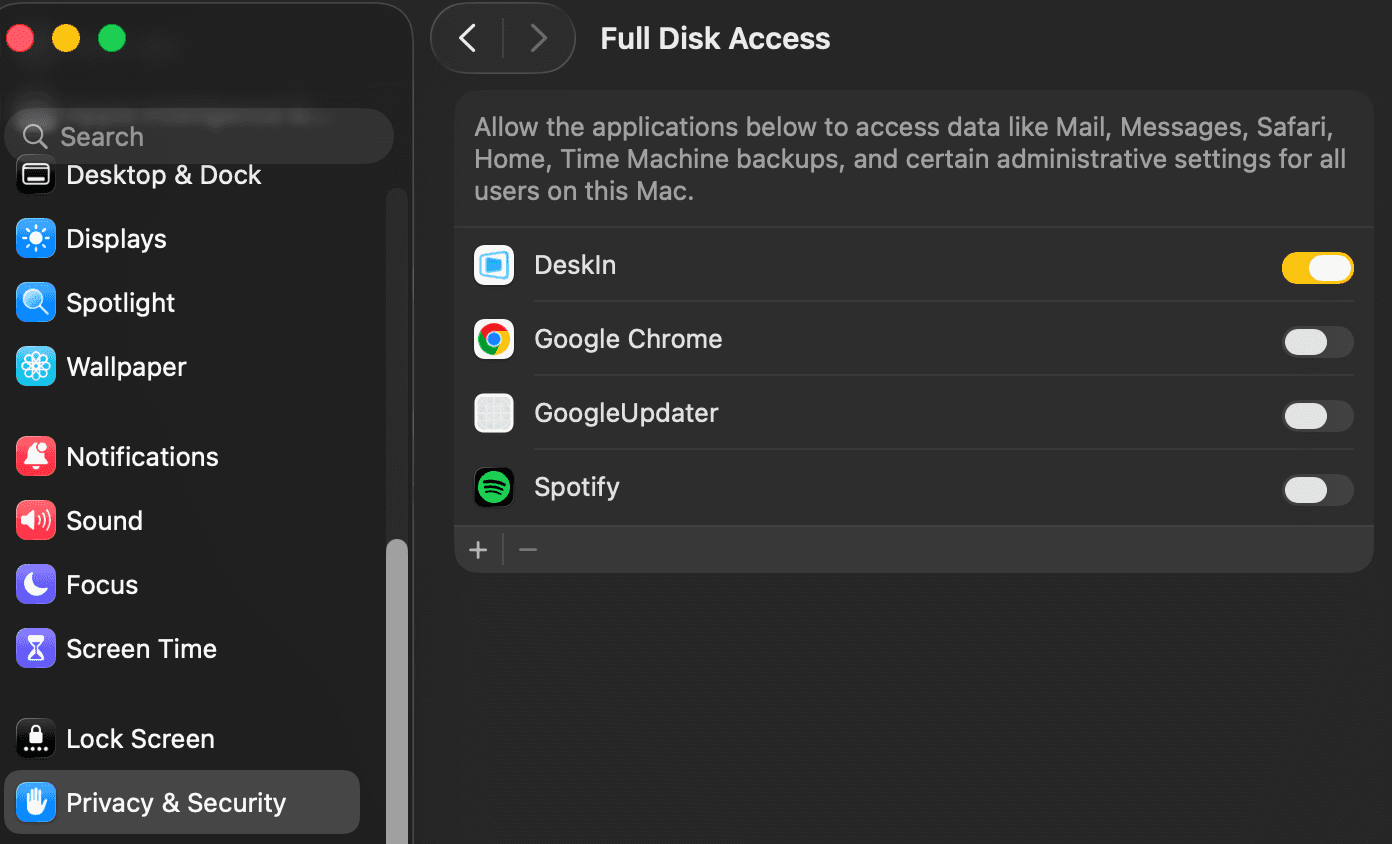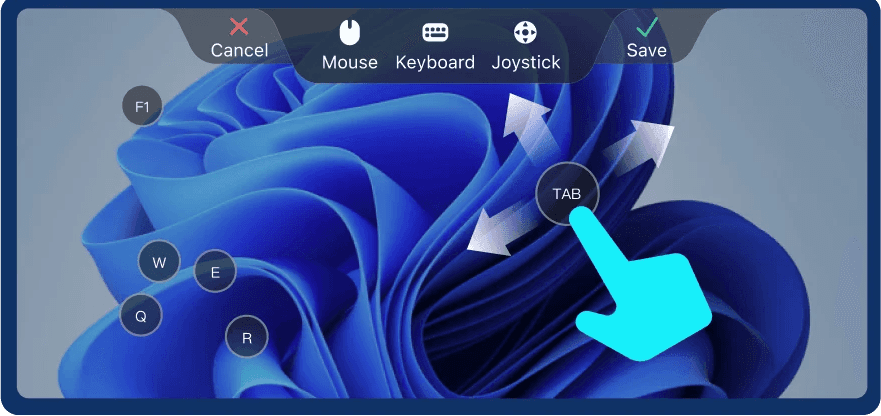使用遠端軟體已經不是什麽新鮮事,不同的遠端軟體提供的服務、功能、品質都有差異,目前市面上的遠端軟體選擇很多,要快速找到適合自己的遠端軟體,最重要的是先明確自己的需求,你是用來辦公、遊戲、還是需要控制手機?你更關注的是軟體的畫質、延遲率、安全性、傳檔速度還是功能豐富度?本文介紹和對比了10款市面上的遠端軟體,相信一定有一款適合你!如果你想要一款綜合實力最强的遠端桌面,DeskIn絕對是你的不二之選,詳細的比較請繼續往下看吧!
💻想直接使用最好的遠端桌面?立即下載DeskIn遠端桌面!獲得最流暢最具性價比的遠端體驗!

遠端桌面軟體有什麽用處?
大家都知道遠端桌面軟體可以幫您存取遠端的裝置,但你可能低估了遠端桌面的用處,遠端桌面可不止能用來辦公唷!
遠端存取檔案:當你出門、旅游、出差,突然需要用到家或公司電腦的檔案,透過遠端軟體就可以用手機或手邊其他裝置直接遠端存取遠端電腦的檔案。
解決長輩問題:很多年輕人擔心長輩上網時被詐騙,或是被長輩要求解決手機問題,但自己又不在他們身邊,也可以使用遠端工具,直接遠端操控他們的手機,輕鬆完成設定,或是清理詐騙訊息。
遠端遊戲:你還可以用遠端軟體來挂機!隨時隨地用手機、iPad、筆電來遠端家中的PC來玩steam遊戲或是其他FPS遊戲。目前很多遠端軟體都有支援遠端遊戲的功能,讓你在手機也能順暢玩PC遊戲。
秒變家用監視器,還能拯救不會拍照的男友:目前很多遠端工具支援取用遠端裝置的攝影鏡頭,有了它,你可以輕鬆將不用的舊裝置變成家用監視器,隨時連線查看遠端狀況。拍照時還能遠端您男友的手機鏡頭檢查構圖,再也不會拍出醜照啦。
管理多螢幕,提升辦公效率:部分遠端工具還支援鏡像、投影螢幕内容、多螢幕以及延伸螢幕,將手邊的裝置變成電腦的雙螢幕,辦公效率up!
省下換新裝置的錢:使用遠端裝置,你可以用本地效能較差的電腦遠端高性能電腦進行辦公,設計、剪輯通通沒問題,而且還非常流暢,筆電再也不用頻繁換新啦。
10款熱門遠端軟體
DeskIn是一款專爲個人使用者設計的遠端軟體,其連線品質廣受用戶好評,被稱爲最穩定、連線品質最低的遠端桌面。其軟體界面簡潔,免費版已經可以商用,並支援3個裝置使用。除了普通的連線功能,他也有很豐富的協助功能,遊戲支援功能和螢幕管理功能,滿足用戶多場景的使用需求。付費方案也相對實惠,并且可以按月結算。
💻適用情景:個人/企業遠端辦公、遠端協作、遠端遊戲、遠端支援、裝置管理、效率提升。
👍優勢:
連線穩定:全球200+伺服器,基本不存在連不上的狀況,沒有連線時長限制
連線品質好:小於40ms超低延遲。
系統相容性高:支援Windows、Mac、Android和iOS等常用系統,行動版功能完善。
傳檔速度快:沒有檔案大小、格式限制。
功能完善:免費版已經可以進行螢幕延伸、投影、語音通話。
安全性高:採用256位元加密,還有新裝置驗證、黑白名單等多種安全設定。
使用場景多:可控安卓手機,有專門的遠端遊戲配套功能,無縫協作。
免費版可商用,可按月訂閲,更容易負擔。
缺點:
暫不支援Linux系統以及在TV上使用
💻立即下載DeskIn遠端桌面!開啓最流暢最具性價比的遠端體驗!


2.TeamViewer
接觸過遠程軟體的人對TeamViewer應該都不陌生,他是最早的遠端軟體之一,各個方面的表現都不錯,主要適合企業遠端辦公、遠端支援使用,不太適合遠端遊戲。Teamviewer主要面向團隊、企業使用者,所有也有較完善的管理功能,安全性強,但同時他的付費版價格也比較高,對於個人使用者可能比較有壓力。
💻適用情景:企業遠端辦公、遠端協作、裝置管理、遠端支援。
👍 優勢:
連線穩定:全球廣泛伺服器佈局,連線品質普遍穩定
連線品質好:支援高清畫質,遠端操控流暢
系統相容性高:支援 Windows、Mac、Linux、iOS、Android 等多平台
安全性高:採用端對端加密 (256-bit AES)、雙重驗證
功能相對完整:支援遠端桌面、檔案傳輸、VPN、會議、聊天等
商業信賴度高:全球知名品牌,企業信任度高
缺點:
免費版限制嚴格,經常誤判商用後強制斷線
價格昂貴,商用授權費用較高
檔案傳輸速度在部分區域可能較慢
功能較多但操作介面偏複雜,對新手不算友善
3.AnyDesk
AnyDesk也是一款比較多人使用的的遠端桌面軟體,其最大的特點是方便易用,無需安裝注冊就可以使用,方便的同時也可能存在一定安全風險。他整體的功能比較簡單,也是針對遠端辦公場景,AnyDesk比較適合簡單的操作,複雜的操作可能會有些吃力。如果只是需要臨時輕度使用的話,可以考慮使用。
💻適用情景:遠端辦公、遠端協作、裝置管理、遠端支援。
👍 優勢:
連線穩定:自研編解碼器 DeskRT,連線穩定、延遲低
系統相容性高:支援 Windows、Mac、Linux、iOS、Android、Google TV
輕量快速:安裝包極小,啟動快速,可以免安裝連接
檔案傳輸快:支援快速拖曳傳檔
缺點:
免費版不可商用偵測,若頻繁使用可能被限制連線,且有1小時時長限制
功能較少,遠端遊戲或投影等多媒體場景支援有限
連線品質一般,4k解析度或網路環境不夠好時延遲嚴重,畫面模糊
安全性存疑,出過多次資安時間
中文輸入法沒有完全適配
4.AweSun
AweSun在疫情期間上架,快速積纍了一定的用戶群,目前主推遠端遊戲。AweSun在移動裝置的使用體驗做的不錯,操作也還蠻順手的,在遠端遊戲上的表現也不錯。不過其協作功能相對較少,不太推薦用於遠端辦公和協作。收費的部分他也跟其他遠端軟體有點差距,是按裝置數收費的。
💻適用情景:遠端辦公、遠端遊戲、裝置管理。
👍 優勢:
遊戲功能完善,對遠端遊戲使用者友好
功能完善:支援多螢幕、白板、遠端開機、錄影等功能
價格相對親民:提供免費版且付費版相對Teamviewer和Anydesk便宜
UI 簡單易用:新手容易上手,行動裝置版本行對直覺
缺點:
免費版部分功能有限制
連線穩定性一般,連線較慢且有連不上的狀況,畫面清晰度低
不支援 Linux 系統
按裝置數收費,對多裝置使用者價格較高
5. Chrome remote desktop
Chrome remote desktop大家應該也比較熟悉,他最大的特點就是完全免費,使用谷歌帳號就可以一鍵注冊使用。因爲功能較少,所以它的界面非常簡潔,小白也能快速上手。這款遠端工具比較適合在桌面端使用,也可以在網頁發起連線,但是其移動版的使用起來不太順手,另外若想要長時間連線或是用來遊戲,這款軟體可能不太適合。
💻適用情景:遠端辦公、遠端協作
👍 優勢:
系統相容性高:支援 Windows、Mac、Linux、ChromeOS、Android、iOS
完全免費:完全免費使用
操作簡單:介面功能簡約,操作簡單只需 Google 帳號即可使用
瀏覽器支援:可直接在 Chrome 瀏覽器使用
缺點:
功能少,缺少多螢幕、錄影、檔案拖曳等進階功能
無法自訂解析度或優化影像
傳輸檔案較麻煩,速度慢
不適合遊戲或高影像需求場景
無語音通話功能
畫質一般,只能應付一般辦公需求,設計、遊戲作業無法支持

6. Splashtop
Splashtop由美國公司開發,也是一款主要針對企業用戶的遠端工具。除了無法控制安卓裝置,它的其它功能都很完善,安全性也很不錯。但有個問題就是價格比較高,不太推薦個人使用者使用。其伺服器主要在美國、德國,當網路環境不太好時,連線可能比較不穩定。
💻適用情景:遠端辦公、遠端協作、遠端遊戲、裝置管理。
👍 優勢:
連線品質好:支援 4K 高畫質,延遲
系統相容性高:支援 Windows、Mac、iOS、Android、Linux
傳檔速度快:檔案傳輸快速,支援拖放
功能完善:支援多螢幕、遠端列印、白板、音訊串流
價格靈活:多種授權方案,適合個人或企業
缺點:
免費版功能有限制,僅限局域網
遠端音訊串流需付費版本
界面相對商業導向,初學者需要適應
其伺服器主要在美國、德國,當網路環境不太好時,連線可能比較不穩定
價格比一些競品稍高

7. Parsec
如果你只需要遠端遊戲,不考慮其他使用場景,基本可以盲選這款遠端軟體。它的免費版本無廣告、介面簡單,還可以和朋友一起遊戲。4K環境下支援最高60FPS,低清畫質最高支援240FPS,基本是目前所有遠端軟體裏面最高的。延遲低適合遊戲使用,還支援搖桿。但其他的功能基本就沒有了,連基本的傳檔功能都沒有,所以西藥遠端辦公或協作的可以不用考慮。
💻適用情景:遠端遊戲
👍 優勢:
連線穩定:專為低延遲設計,連線表現出色
連線品質好:支援 4K60fps 或 144fps,非常適合遊戲串流
傳檔速度快:支援高速串流,尤其遊戲場景表現佳
專為遊戲設計:支援多人連線遊戲房間
延遲極低:遊戲操作反應靈敏
缺點:
功能單純,僅適合遊戲使用,不適合辦公或遠端支援
價格較高,免費版不能商用
不支援 iOS 裝置
有時會遇到穩定性問題,尤其網路不佳時
不支援多功能辦公場景(如遠端支援、投影、裝置管理等)
8. Spacedesk
spacedesk也是德國的軟體,是一款特別的遠端軟體,主要專注螢幕管理的工具。它支援個人完全免費使用,商用需要購買付費許可,可以透過usb、LAN、wifi來進行多個螢幕的延伸、鏡像投影以及存取遠端裝置的螢幕、繪圖板、揚聲器等等外接裝置。如果你是多螢幕使用者,可以考慮這款軟體。
💻適用情景:遠端支援、螢幕管理、效率提升。
👍 優勢:
免費:目前完全免費
輕量安裝:安裝簡單,設定快速
延伸螢幕用途多:可作為觸控螢幕,多螢幕管理、支援有線+無線連接
缺點:
不是真正遠端桌面軟體,僅適合延伸螢幕
無法進行遠端操控(僅螢幕顯示,不含操作控制)
不支援 macOS 作為主機端
無檔案傳輸或語音通話功能
螢幕刷新率較高時偶有延遲
9. GlideX
GlideX是華碩内建的遠端軟體,也支援在其他系統、裝置上使用。與spacedesk、DeskIn類似,他也有豐富的螢幕管理功能,針對華碩使用者可以獲得一年的“專業版”使用權限。不過其畫質只有支援到2k,另外免費版限制比較多。只推薦給華碩使用者或只需要進行螢幕管理的使用者使用。
💻適用情景:遠端辦公、裝置管理、效率提升。
👍 優勢:
簡單易用:安裝簡單,介面友善
華碩使用者合適:華碩使用者可以獲得一年的“專業版”使用權限
缺點:
僅支援 iOS 投影到 Windows,不支援 Android
功能較單純,無遠端操控、檔案傳輸功能
高畫質串流下偶有延遲,最高只支援到2K
不支援 macOS 作為投影目標
不適合遊戲或高互動場景
10. Ultraviewer
Ultraviewer的使用者在越南、印度居多,他只支援在Windows上面做使用。雖然其功能、性能對比其他軟體並不突出,但它主要的優勢是功能、操作界面簡單,而且付費版的價格便宜。如果您是Windows用戶、只是偶爾使用的、不想要太複雜界面的可以嘗試這款。需要留意的是其免費版有廣告。
💻適用情景:遠端辦公、臨時遠端
👍 優勢:
優勢:價格便宜,功能簡單易用
輕量簡單:安裝快速,操作簡易
免費可商用:免費版本即允許商業用途
缺點:
不支援 macOS、Linux、iOS、Android
功能較單純,缺少多螢幕、錄影、延伸螢幕等進階功能
不適合高畫質、遊戲或多媒體場景
無語音通話或會議功能
安全性不若大型品牌嚴謹,較適合中小型或個人用途
如何使用遠端桌面DeskIn?
第一步,在用於控制與被控制的裝置中分別安裝並開啓DeskIn,注冊一個免費賬戶並登入,如果你是首次在新裝置登入,需要到注冊信箱完成驗證。


第二步,在主控裝置上輸入被控制的裝置的ID,點擊連線,使用密碼連線或免密連線方式完成連線。

等待幾秒后,你就可以控制遠端裝置了,遠端裝置就好像在你身邊一樣。
結論
本文爲你介紹了10款常見的遠程軟體,並總結了他們的優點和使用情境,幫助你更快選擇適合自己的一款遠程軟體。其中最推薦您使用DeskIn,因爲它的功能多樣,能夠滿足辦公、娛樂的多元需求,是綜合能力最强的一款。遠端軟體的體驗也跟您所在的地區、使用的網路、裝置有關,多試幾個,相信您會挑選出最適合自己的遠端桌面軟體。
💻想立即下載DeskIn遠端桌面!獲得最流暢最具性價比的遠端體驗!

使用遠端軟體已經不是什麽新鮮事,不同的遠端軟體提供的服務、功能、品質都有差異,目前市面上的遠端軟體選擇很多,要快速找到適合自己的遠端軟體,最重要的是先明確自己的需求,你是用來辦公、遊戲、還是需要控制手機?你更關注的是軟體的畫質、延遲率、安全性、傳檔速度還是功能豐富度?本文介紹和對比了10款市面上的遠端軟體,相信一定有一款適合你!如果你想要一款綜合實力最强的遠端桌面,DeskIn絕對是你的不二之選,詳細的比較請繼續往下看吧!
💻想直接使用最好的遠端桌面?立即下載DeskIn遠端桌面!獲得最流暢最具性價比的遠端體驗!

遠端桌面軟體有什麽用處?
大家都知道遠端桌面軟體可以幫您存取遠端的裝置,但你可能低估了遠端桌面的用處,遠端桌面可不止能用來辦公唷!
遠端存取檔案:當你出門、旅游、出差,突然需要用到家或公司電腦的檔案,透過遠端軟體就可以用手機或手邊其他裝置直接遠端存取遠端電腦的檔案。
解決長輩問題:很多年輕人擔心長輩上網時被詐騙,或是被長輩要求解決手機問題,但自己又不在他們身邊,也可以使用遠端工具,直接遠端操控他們的手機,輕鬆完成設定,或是清理詐騙訊息。
遠端遊戲:你還可以用遠端軟體來挂機!隨時隨地用手機、iPad、筆電來遠端家中的PC來玩steam遊戲或是其他FPS遊戲。目前很多遠端軟體都有支援遠端遊戲的功能,讓你在手機也能順暢玩PC遊戲。
秒變家用監視器,還能拯救不會拍照的男友:目前很多遠端工具支援取用遠端裝置的攝影鏡頭,有了它,你可以輕鬆將不用的舊裝置變成家用監視器,隨時連線查看遠端狀況。拍照時還能遠端您男友的手機鏡頭檢查構圖,再也不會拍出醜照啦。
管理多螢幕,提升辦公效率:部分遠端工具還支援鏡像、投影螢幕内容、多螢幕以及延伸螢幕,將手邊的裝置變成電腦的雙螢幕,辦公效率up!
省下換新裝置的錢:使用遠端裝置,你可以用本地效能較差的電腦遠端高性能電腦進行辦公,設計、剪輯通通沒問題,而且還非常流暢,筆電再也不用頻繁換新啦。
10款熱門遠端軟體
DeskIn是一款專爲個人使用者設計的遠端軟體,其連線品質廣受用戶好評,被稱爲最穩定、連線品質最低的遠端桌面。其軟體界面簡潔,免費版已經可以商用,並支援3個裝置使用。除了普通的連線功能,他也有很豐富的協助功能,遊戲支援功能和螢幕管理功能,滿足用戶多場景的使用需求。付費方案也相對實惠,并且可以按月結算。
💻適用情景:個人/企業遠端辦公、遠端協作、遠端遊戲、遠端支援、裝置管理、效率提升。
👍優勢:
連線穩定:全球200+伺服器,基本不存在連不上的狀況,沒有連線時長限制
連線品質好:小於40ms超低延遲。
系統相容性高:支援Windows、Mac、Android和iOS等常用系統,行動版功能完善。
傳檔速度快:沒有檔案大小、格式限制。
功能完善:免費版已經可以進行螢幕延伸、投影、語音通話。
安全性高:採用256位元加密,還有新裝置驗證、黑白名單等多種安全設定。
使用場景多:可控安卓手機,有專門的遠端遊戲配套功能,無縫協作。
免費版可商用,可按月訂閲,更容易負擔。
缺點:
暫不支援Linux系統以及在TV上使用
💻立即下載DeskIn遠端桌面!開啓最流暢最具性價比的遠端體驗!


2.TeamViewer
接觸過遠程軟體的人對TeamViewer應該都不陌生,他是最早的遠端軟體之一,各個方面的表現都不錯,主要適合企業遠端辦公、遠端支援使用,不太適合遠端遊戲。Teamviewer主要面向團隊、企業使用者,所有也有較完善的管理功能,安全性強,但同時他的付費版價格也比較高,對於個人使用者可能比較有壓力。
💻適用情景:企業遠端辦公、遠端協作、裝置管理、遠端支援。
👍 優勢:
連線穩定:全球廣泛伺服器佈局,連線品質普遍穩定
連線品質好:支援高清畫質,遠端操控流暢
系統相容性高:支援 Windows、Mac、Linux、iOS、Android 等多平台
安全性高:採用端對端加密 (256-bit AES)、雙重驗證
功能相對完整:支援遠端桌面、檔案傳輸、VPN、會議、聊天等
商業信賴度高:全球知名品牌,企業信任度高
缺點:
免費版限制嚴格,經常誤判商用後強制斷線
價格昂貴,商用授權費用較高
檔案傳輸速度在部分區域可能較慢
功能較多但操作介面偏複雜,對新手不算友善
3.AnyDesk
AnyDesk也是一款比較多人使用的的遠端桌面軟體,其最大的特點是方便易用,無需安裝注冊就可以使用,方便的同時也可能存在一定安全風險。他整體的功能比較簡單,也是針對遠端辦公場景,AnyDesk比較適合簡單的操作,複雜的操作可能會有些吃力。如果只是需要臨時輕度使用的話,可以考慮使用。
💻適用情景:遠端辦公、遠端協作、裝置管理、遠端支援。
👍 優勢:
連線穩定:自研編解碼器 DeskRT,連線穩定、延遲低
系統相容性高:支援 Windows、Mac、Linux、iOS、Android、Google TV
輕量快速:安裝包極小,啟動快速,可以免安裝連接
檔案傳輸快:支援快速拖曳傳檔
缺點:
免費版不可商用偵測,若頻繁使用可能被限制連線,且有1小時時長限制
功能較少,遠端遊戲或投影等多媒體場景支援有限
連線品質一般,4k解析度或網路環境不夠好時延遲嚴重,畫面模糊
安全性存疑,出過多次資安時間
中文輸入法沒有完全適配
4.AweSun
AweSun在疫情期間上架,快速積纍了一定的用戶群,目前主推遠端遊戲。AweSun在移動裝置的使用體驗做的不錯,操作也還蠻順手的,在遠端遊戲上的表現也不錯。不過其協作功能相對較少,不太推薦用於遠端辦公和協作。收費的部分他也跟其他遠端軟體有點差距,是按裝置數收費的。
💻適用情景:遠端辦公、遠端遊戲、裝置管理。
👍 優勢:
遊戲功能完善,對遠端遊戲使用者友好
功能完善:支援多螢幕、白板、遠端開機、錄影等功能
價格相對親民:提供免費版且付費版相對Teamviewer和Anydesk便宜
UI 簡單易用:新手容易上手,行動裝置版本行對直覺
缺點:
免費版部分功能有限制
連線穩定性一般,連線較慢且有連不上的狀況,畫面清晰度低
不支援 Linux 系統
按裝置數收費,對多裝置使用者價格較高
5. Chrome remote desktop
Chrome remote desktop大家應該也比較熟悉,他最大的特點就是完全免費,使用谷歌帳號就可以一鍵注冊使用。因爲功能較少,所以它的界面非常簡潔,小白也能快速上手。這款遠端工具比較適合在桌面端使用,也可以在網頁發起連線,但是其移動版的使用起來不太順手,另外若想要長時間連線或是用來遊戲,這款軟體可能不太適合。
💻適用情景:遠端辦公、遠端協作
👍 優勢:
系統相容性高:支援 Windows、Mac、Linux、ChromeOS、Android、iOS
完全免費:完全免費使用
操作簡單:介面功能簡約,操作簡單只需 Google 帳號即可使用
瀏覽器支援:可直接在 Chrome 瀏覽器使用
缺點:
功能少,缺少多螢幕、錄影、檔案拖曳等進階功能
無法自訂解析度或優化影像
傳輸檔案較麻煩,速度慢
不適合遊戲或高影像需求場景
無語音通話功能
畫質一般,只能應付一般辦公需求,設計、遊戲作業無法支持

6. Splashtop
Splashtop由美國公司開發,也是一款主要針對企業用戶的遠端工具。除了無法控制安卓裝置,它的其它功能都很完善,安全性也很不錯。但有個問題就是價格比較高,不太推薦個人使用者使用。其伺服器主要在美國、德國,當網路環境不太好時,連線可能比較不穩定。
💻適用情景:遠端辦公、遠端協作、遠端遊戲、裝置管理。
👍 優勢:
連線品質好:支援 4K 高畫質,延遲
系統相容性高:支援 Windows、Mac、iOS、Android、Linux
傳檔速度快:檔案傳輸快速,支援拖放
功能完善:支援多螢幕、遠端列印、白板、音訊串流
價格靈活:多種授權方案,適合個人或企業
缺點:
免費版功能有限制,僅限局域網
遠端音訊串流需付費版本
界面相對商業導向,初學者需要適應
其伺服器主要在美國、德國,當網路環境不太好時,連線可能比較不穩定
價格比一些競品稍高

7. Parsec
如果你只需要遠端遊戲,不考慮其他使用場景,基本可以盲選這款遠端軟體。它的免費版本無廣告、介面簡單,還可以和朋友一起遊戲。4K環境下支援最高60FPS,低清畫質最高支援240FPS,基本是目前所有遠端軟體裏面最高的。延遲低適合遊戲使用,還支援搖桿。但其他的功能基本就沒有了,連基本的傳檔功能都沒有,所以西藥遠端辦公或協作的可以不用考慮。
💻適用情景:遠端遊戲
👍 優勢:
連線穩定:專為低延遲設計,連線表現出色
連線品質好:支援 4K60fps 或 144fps,非常適合遊戲串流
傳檔速度快:支援高速串流,尤其遊戲場景表現佳
專為遊戲設計:支援多人連線遊戲房間
延遲極低:遊戲操作反應靈敏
缺點:
功能單純,僅適合遊戲使用,不適合辦公或遠端支援
價格較高,免費版不能商用
不支援 iOS 裝置
有時會遇到穩定性問題,尤其網路不佳時
不支援多功能辦公場景(如遠端支援、投影、裝置管理等)
8. Spacedesk
spacedesk也是德國的軟體,是一款特別的遠端軟體,主要專注螢幕管理的工具。它支援個人完全免費使用,商用需要購買付費許可,可以透過usb、LAN、wifi來進行多個螢幕的延伸、鏡像投影以及存取遠端裝置的螢幕、繪圖板、揚聲器等等外接裝置。如果你是多螢幕使用者,可以考慮這款軟體。
💻適用情景:遠端支援、螢幕管理、效率提升。
👍 優勢:
免費:目前完全免費
輕量安裝:安裝簡單,設定快速
延伸螢幕用途多:可作為觸控螢幕,多螢幕管理、支援有線+無線連接
缺點:
不是真正遠端桌面軟體,僅適合延伸螢幕
無法進行遠端操控(僅螢幕顯示,不含操作控制)
不支援 macOS 作為主機端
無檔案傳輸或語音通話功能
螢幕刷新率較高時偶有延遲
9. GlideX
GlideX是華碩内建的遠端軟體,也支援在其他系統、裝置上使用。與spacedesk、DeskIn類似,他也有豐富的螢幕管理功能,針對華碩使用者可以獲得一年的“專業版”使用權限。不過其畫質只有支援到2k,另外免費版限制比較多。只推薦給華碩使用者或只需要進行螢幕管理的使用者使用。
💻適用情景:遠端辦公、裝置管理、效率提升。
👍 優勢:
簡單易用:安裝簡單,介面友善
華碩使用者合適:華碩使用者可以獲得一年的“專業版”使用權限
缺點:
僅支援 iOS 投影到 Windows,不支援 Android
功能較單純,無遠端操控、檔案傳輸功能
高畫質串流下偶有延遲,最高只支援到2K
不支援 macOS 作為投影目標
不適合遊戲或高互動場景
10. Ultraviewer
Ultraviewer的使用者在越南、印度居多,他只支援在Windows上面做使用。雖然其功能、性能對比其他軟體並不突出,但它主要的優勢是功能、操作界面簡單,而且付費版的價格便宜。如果您是Windows用戶、只是偶爾使用的、不想要太複雜界面的可以嘗試這款。需要留意的是其免費版有廣告。
💻適用情景:遠端辦公、臨時遠端
👍 優勢:
優勢:價格便宜,功能簡單易用
輕量簡單:安裝快速,操作簡易
免費可商用:免費版本即允許商業用途
缺點:
不支援 macOS、Linux、iOS、Android
功能較單純,缺少多螢幕、錄影、延伸螢幕等進階功能
不適合高畫質、遊戲或多媒體場景
無語音通話或會議功能
安全性不若大型品牌嚴謹,較適合中小型或個人用途
如何使用遠端桌面DeskIn?
第一步,在用於控制與被控制的裝置中分別安裝並開啓DeskIn,注冊一個免費賬戶並登入,如果你是首次在新裝置登入,需要到注冊信箱完成驗證。


第二步,在主控裝置上輸入被控制的裝置的ID,點擊連線,使用密碼連線或免密連線方式完成連線。

等待幾秒后,你就可以控制遠端裝置了,遠端裝置就好像在你身邊一樣。
結論
本文爲你介紹了10款常見的遠程軟體,並總結了他們的優點和使用情境,幫助你更快選擇適合自己的一款遠程軟體。其中最推薦您使用DeskIn,因爲它的功能多樣,能夠滿足辦公、娛樂的多元需求,是綜合能力最强的一款。遠端軟體的體驗也跟您所在的地區、使用的網路、裝置有關,多試幾個,相信您會挑選出最適合自己的遠端桌面軟體。
💻想立即下載DeskIn遠端桌面!獲得最流暢最具性價比的遠端體驗!


Play x Work
All at Once
DeskIn Remote Game
only $14.32 USD 🎉 Limited on July 16-31
Add promo code: deskinsummer1





